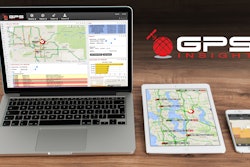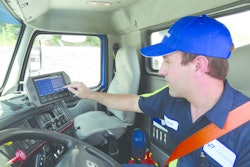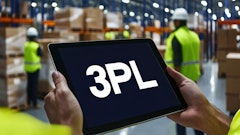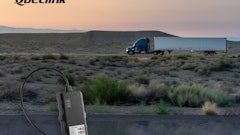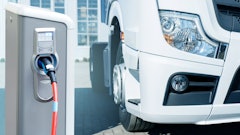
The start of the new year ushers in an abundance of forecasting from economists, analysts and experts of all stripes. For fleet managers, the perennial question remains—how will it all impact my operations?
Food Logistics checked in with three experts from the transportation sector to get that answer, looking at specific areas that play a key role in shaping the current environment: capacity and regulations, labor, rates, technology and equipment, and alternative fuels and autonomous vehicles.
Avery Vise, vice president, trucking, at FTR, says that capacity will remain cyclical in 2019, “though the spread between the peaks and troughs might become tighter.”
Log in to view the full article
The start of the new year ushers in an abundance of forecasting from economists, analysts and experts of all stripes. For fleet managers, the perennial question remains—how will it all impact my operations?
Food Logistics checked in with three experts from the transportation sector to get that answer, looking at specific areas that play a key role in shaping the current environment: capacity and regulations, labor, rates, technology and equipment, and alternative fuels and autonomous vehicles.
Capacity and Regulations
Avery Vise, vice president, trucking, at FTR, says that capacity will remain cyclical in 2019, “though the spread between the peaks and troughs might become tighter.”
In addition, “While actual surpluses of drivers are very rare—we haven’t had one since the Great Depression—the shortage does shrink frequently. Indeed, we are likely entering such a period now, although it is starting from the most severe driver shortage ever recorded.”
However, eliminating the driver shortage entirely is not necessary to achieve market stability, he says.
“FTR’s analysis is that once driver shortages fall below 100,000 drivers, the market no longer experiences significant upward pressure on rates,” Vice says. “Owing to demographic changes, such as the ongoing retirement of Baby Boomers—it will be increasingly difficult to attract new truck drivers, all other things being equal. Yet, it is unlikely that the U.S. economy will continue to see the current degree of labor tightness beyond mid-2019, thus freeing up potential new truck drivers.”
As for the impact of regulations on the trucking industry, Vise says they “tend to lose steam over time as the supply chain learns to adjust through modified practices. This is especially true when the impact is more about productivity than driver supply as is the case with HOS and ELDs, for example.
“Only a couple of significant regulations—the drug and alcohol clearinghouse and the entry-level driver training standards—are set for implementation in the next couple of years, and FTR does not expect these regulations to have a market-moving impact. Otherwise, at least until after the next presidential election, we will see a deregulatory agenda—principally an effort to add more driver and carrier flexibility to certain HOS provisions,” Vice adds.
Wilbur Deck, manager of customer strategy for Trimble Visibility, sees tight capacity in the transportation sector as the “new normal” going forward.
“The freight market is impacted by so many different variables that no one can truly predict where it is going to go aside from normal seasonal variations,” he says. “The driver shortage is the largest factor overall, and that is not likely to change with any new regulation or legislation.”
In order to manage market volatility, Deck advises shippers to “pay close attention to freight market trends and information while continuously looking internally at ways to become a ‘shipper of choice’ to retain existing capacity at market competitive rates.”
On the topic of ELDs, Mark Montague, DAT’s industry pricing analyst, says the impact of the ELD mandate is subsiding, while the learning curve associated with ELDs has plateaued.
However, hair follicle testing, which has support from the American Trucking Associations and the Trucking Alliance, is expected to eventually be written into legislation, which would further restrict the driver pool, suggests Montague.
“Of course, [hair follicle testing] is positive in terms of safety, but the negative aspect is that it’s already hard to find a qualified truck driver and this will continue to be the case in 2019.”
Labor
“Pay is clearly the principal tool to attract drivers,” acknowledges FTR’s Vise, but equipment also plays a role, he says, noting that companies placed record-high truck orders in 2018, spurred in part by tax reforms enacted in 2017 that made it more appealing to invest in new capital equipment.
Many carriers had been operating older units, including equipment that had been purchased before the recession, he notes.
Meanwhile, carriers that are making technology investments, such as those that match load options with driver preferences, are finding this is also a way to increase driver satisfaction, adds Vise.
Trimble’s Deck says driver retention is the number one concern for most carriers right now.
“Carriers are offering all kinds of incentives to attract drivers with things like training, newer equipment, signing bonuses, benefits packages, and on-board bonuses like tablets or Xboxes,” he says. “Carriers are also re-engineering their networks to offer different routes to get drivers home more often,” offering that, “When the market is in the carrier’s favor, it will prioritize lanes that are more efficient and driver-friendly in order to retain these employees.”
DAT’s Montague agrees that new equipment is an incentive for drivers. “Putting drivers in a new truck with the latest in technology and comfort is certainly a way to help retain drivers.”
He cautions, though, that while the oil and gas sector has been soft, increased investment in that sector in 2019 could pull some workers away from trucking, adding further strain to the already tight driver pool.
Rates
For 2019, FTR’s Vise expects rates to be “significantly softer than the extraordinary environment we saw in late 2017 and through most of 2018.” When Food Logistics spoke with him in December, he said that excluding fuel surcharges, total truckload rates would likely post a 12 percent increase for 2018. Though spot rates for 2018 were already negative year over year, this situation would likely continue for some time.
Meanwhile, “The growth rate in contract rates has likely peaked, he says, but because many bid packages were finalized later than usual, the year-over-year comparisons in contract rates should remain between 5 percent and 10 percent higher year over year through the first quarter or so of 2019. However, the trend clearly is lower, and we could see essentially flat year-over-year rates by the fourth quarter (of 2019).”
Vise further notes that “with softer contract rates and spot rates in negative territory year over year through most of 2019, total truckload rates excluding fuel will be weak, and we could see some months where overall rates are negative year over year.
“Our latest forecast for 2019 is for total rates, excluding fuel, to be up less than 2 percent over 2018, and the risk to that forecast is on the downside,” he adds.
Vice also emphasizes that FTR focuses on rates excluding fuel surcharges “because we want to isolate fundamental rate pressures. However, if diesel and crude oil prices were to remain at current levels or decline further, shippers probably would see considerably lower total transportation costs in 2019 than in 2018.”
According to Trimble’s Deck, “While 2019 capacity may be somewhat looser than 2018, shippers should not anticipate much relief on freight rates.”
For that reason, he says “the best way to manage rate volatility would be to limit exposure as much as possible to the spot market. Building a robust routing guide and backup strategy are key components to minimizing risks from a rates perspective.”
While van and reefer rates experienced considerable pressure in 2018, DAT’s Montague expects that pressure to ease a little in 2019.
In particular, “The first quarter could be a little softer than normal,” he says, in part due to the typically slower economic growth in the first three months of the year, compounded by the seasonal lull in both construction and fresh produce.
Montague says the market is unlikely to see the rate peaks that materialized at the end of 2017 or 2018, but that rates in 2019 “could still pose some challenges.”
Furthermore, fuel price volatility can make forecasting tricky, he says. “That’s the danger of trying to predict the future—it’s something that can change pretty quickly.”
In addition to fuel prices, Montague also says changes in trade pacts and other variables could significantly affect pricing in 2019.
Technology and Equipment
The trend that has the greatest near-term potential FTR’s Vice describes broadly as “intelligent freight systems,” which are enabled by artificial intelligence.
“This technology is akin to what Uber and Lyft use today to identify and manage their passenger transportation workforce,” he explains. “Startups and traditional broker and carrier players are beginning to use such systems to identify available capacity and use it more efficiently.”
Ironically, the trend, he adds, was boosted by a government mandate that served to constrain productivity,” noting that, “ELDs forced technology adoption among small carriers and owner-operators, thereby opening the door to greater visibility.”
As for equipment, while costs for new equipment keep rising, the current surge in fleet purchasing is boosting the supply of used trucks, says Vise.
“With the strong rate environment in 2018, we saw a significant increase in the number of newly formed trucking companies. Although this impetus for carrier formation will subside as rates soften, the availability of affordable used equipment should continue to foster new carriers,” he notes.
Trimble’s Deck points out that, “Investments in supply chain and transportation technology have increased dramatically in 2018 and should continue into 2019,” adding that, “The highly fragmented and antiquated business nature of the transportation industry make it an especially attractive target for technology disruption.”
He advises fleet managers to find a technology vendor or partner that can help navigate this market considering that “things are changing so rapidly.”
At the same time, “Shippers can leverage these technology platforms to automate manual processes, save money and become more proactive with exception management.” Simply put, “Shippers are going to be exposed to more data than ever before, and the ones that can mine that information effectively will be able to generate significant competitive advantages in their industry,” he says.
It’s worth underscoring that it costs substantially more to acquire and operate reefer equipment compared to dry vans, notes DAT’s Montague, which has bearing on the topic of equipment.
“Whereas a van trailer costs roughly $25,000, a reefer can cost north of $50,000. Not to mention, if you’ve got a preloaded reefer trailer sitting in the yard burning diesel fuel, you’ve got to monitor that to make sure it doesn’t run out of fuel. Thus, it’s a lot more difficult in the refrigerated sector to operate corresponding equipment. It’s not impossible; it’s just not as easy as in the van world.”
Alternative Fuels and Autonomous Vehicles
Due to equipment and maintenance costs and limitations on fuel distribution, natural gas has gained traction only in a few situations, FTR’s Vice says. “One is when diesel prices have surged to record or near-record levels, but we have not seen market-moving diesel prices in quite some time. Another is in local and regional applications where fuel availability is not as much of an issue and where local regulations discourage diesel trucks,” he says. “Meanwhile, many of the tax incentives that once offset some of the disincentives to natural gas have expired.”
Vise says, however, that there’s greater interest in electric vehicles “principally because of the potential operating cost advantage over diesel and some potential performance benefits.”
On the other hand, “Autonomous vehicles continue to get more buzz among the media and vehicle suppliers than fleet operators,” Vise notes. “We expect to see automation implemented and proven in highly controlled environments over the next few years, but it probably will be upwards of a couple of decades before we see driverless trucks as part of routine over-the-road operations.”
For his part, Trimble’s Deck says that while the hype around CNG/LNG has subsided a bit, it is still certainly viable and a key component to overall fleet management.
Furthermore, “Electric vehicles have taken most of the headlines recently, but the technology is still in development and yet to be largely adopted,” he says, adding that autonomous vehicles are on the “distant horizon,” but “not a real factor for fleet managers to have to consider for several more years.”
DAT’s Montague says interest in alternative fuels is still there, but it’s more consistent in private lease, short haul and regional operations.
“We’re likely to see more testing of autonomous vehicles in 2019 and 2020,” but he doesn’t see any dramatic impacts in the near term.
Meanwhile, developments in the electrical vehicle sector are “interesting and could have a more immediate impact on fleets,” he says.




